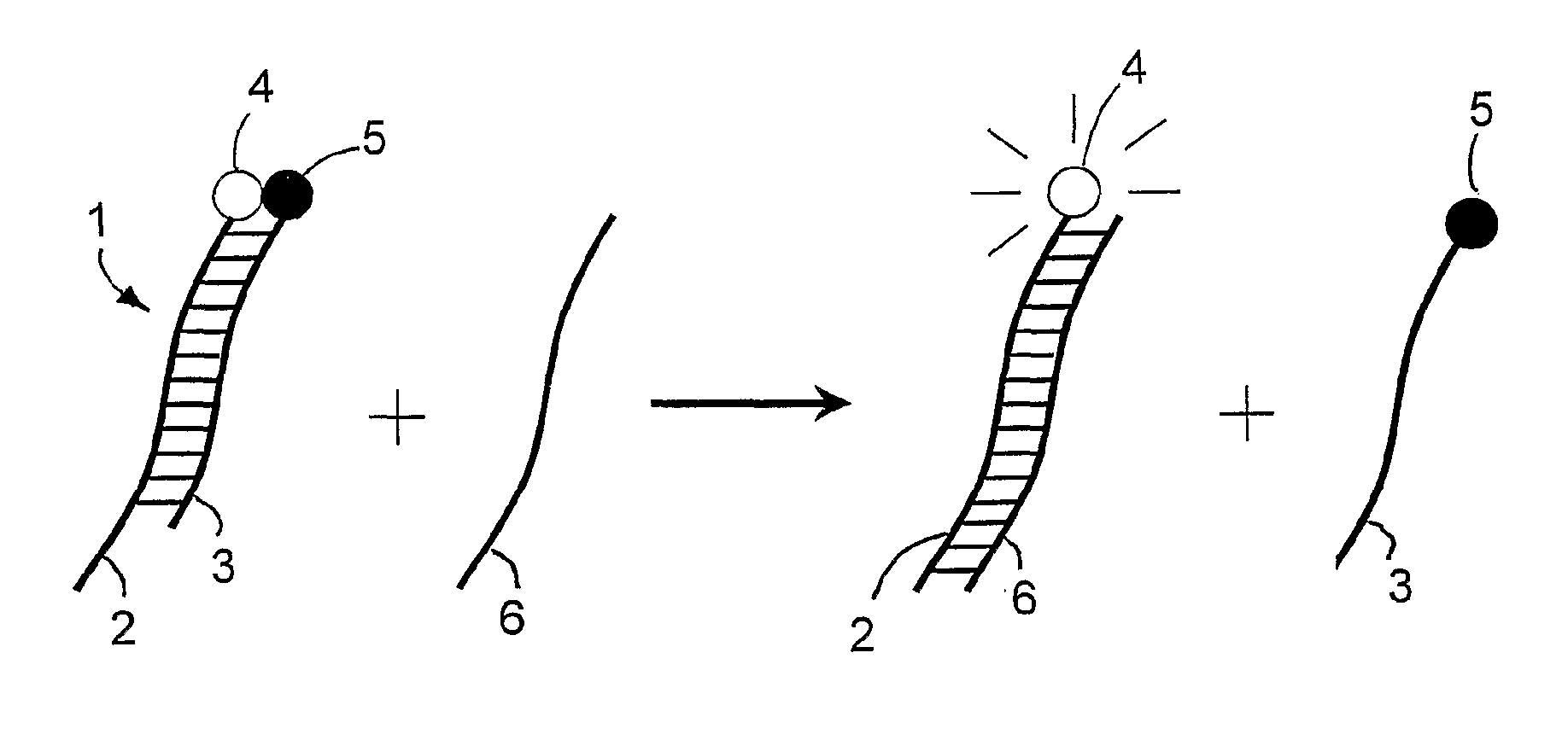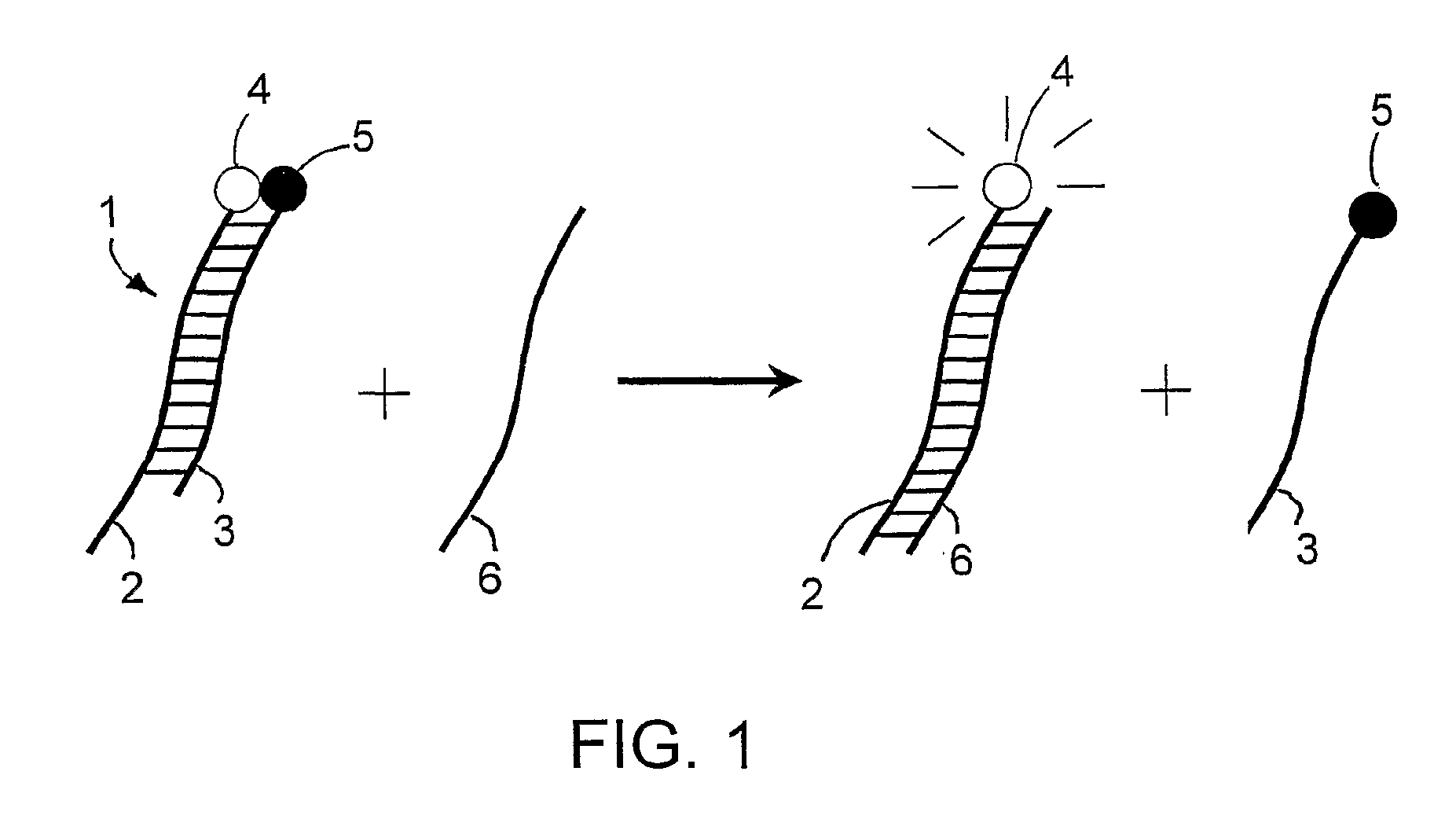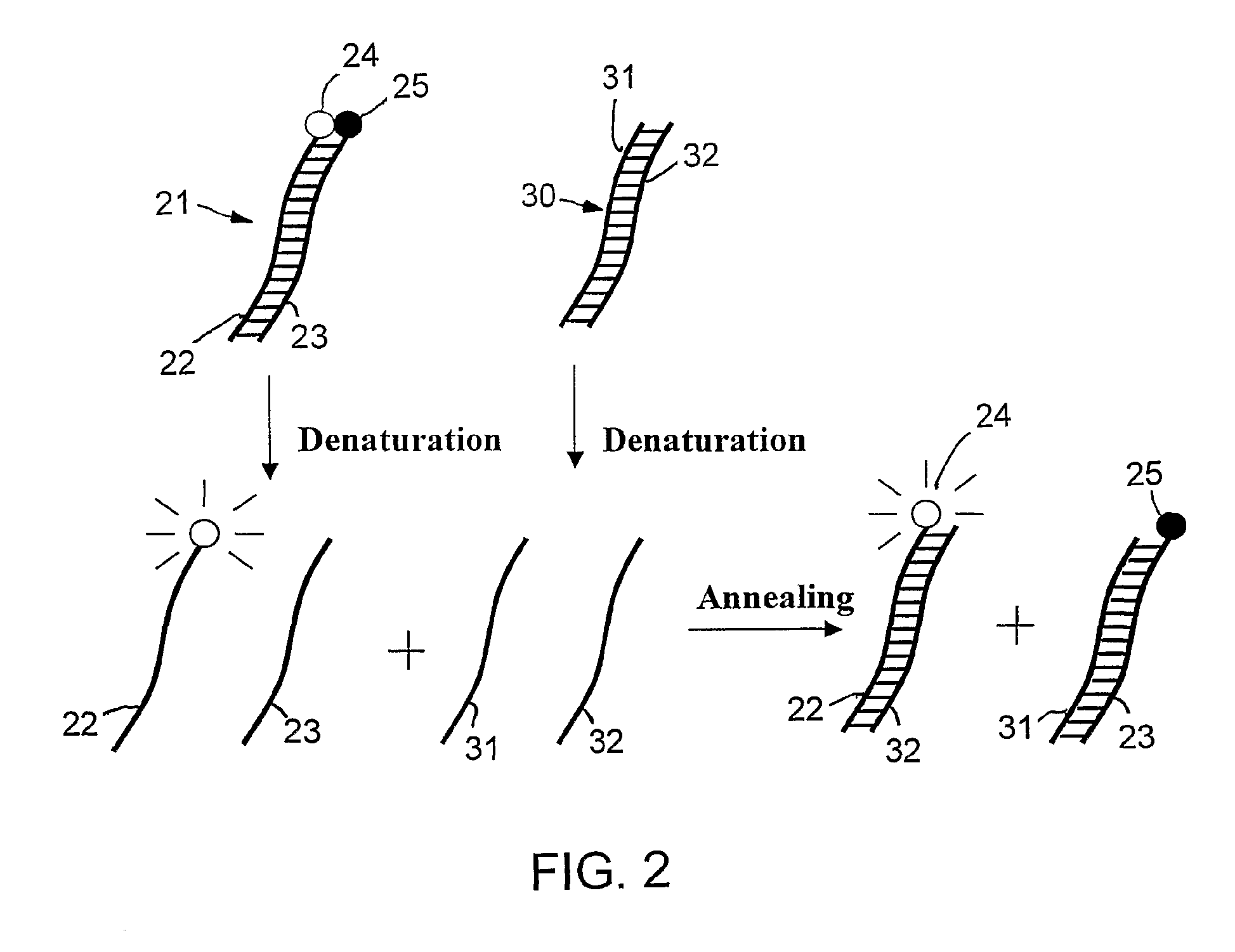Specific double-stranded probes for homogeneous detection of nucleic acid and their application methods
a technology of nucleic acid and probes, applied in the field of specific double-stranded probes for homogeneous detection of nucleic acid and their application methods, can solve the problems of current probes, non-probe formats, and limited application, and hinder the wide application of clinical diagnostics
- Summary
- Abstract
- Description
- Claims
- Application Information
AI Technical Summary
Benefits of technology
Problems solved by technology
Method used
Image
Examples
example 1
Spontaneous Reaction a of Double-Stranded Probe with its Target
[0031]Fifty μL of 0.80 μM double-stranded probe in 10 mM Tris-HCl (pH 8.0) containing 1.5 mM MgCl.sub.2 was maintained at 25° C., and its fluorescence was monitored over time in an Eclipse spectrofluorometer (Varian). Fluorescence intensity was first measured for 2 minutes at 25° C. Then a two-fold molar excess (5 μL of 16 μM solution) of target oligonucleotide was added, and the level of fluorescence was recorded at 15-second intervals. The nucleotide sequences of the two probe strands were 5′-FAM-ACGAACCTCAAACAGACACCAT-3′ (SEQ ID NO 1) (longer strand) and 5′-TGTCTGTTTGAGGTTGCT-dabcyl-3′ (SEQ ID NO 2) (shorter strand). The target complementary to the longer strand was 5′-CCATGGTGTCTGTTTGAGGTTGCT-3′ (SEQ ID NO 3, and the target containing a single-nucleotide substitution (mismatched target) was 5′-CCATGGTGTCTGTTTCAGGTTGCT-3′ (SEQ ID NO 4), where an underline identifies the nucleotide substitution.
[0032]FIG. 3 shows the f...
example 2
Real-Time PCR Detection of Human 13-Globin with Double-Stranded Probe
[0033]To test the utility of double-stranded probes as real-time amplicon detectors in PCR assays, PCR amplifications were performed with a dilation series of target. Each 50 μL reaction contained 5 μL serially diluted template, 0.2 μM double-stranded probe, 0.4 μM of each primer, 2.0 units of Taq polymerase, 200 μM of each deoxyribonucleoside triphosphate, 50 mM KCl, 2.0 mM MgCl2, and 10 mM Tris-HCl (pH 8.3). After denaturation at 94° C. for 5 min, 40 cycles of amplification (95° C. for 30 sec, 50° C. for 30 sec, and 72° C. for 1 min) were carried out in sealed tubes on a fluorometric thermal cycler (Rotor-Gene 2000, Corbett Research). Fluorescence was recorded at the annealing stage. The original extracted human DNA was serially diluted in tenfold steps and used as template. Water was used in place of the template for the control sample. The double-stranded probe contains a nucleic acid sequence complementary to ...
example 3
Mutation Detection in Real-Time PCR
[0037]To demonstrate the utility of probes according to this invention in single-nucleotide mutation detection with real-time PCR, we prepared two DNA templates (targets) from the human β-globin gene that differed from one another by a single nucleotide substitution. We also prepared a double-stranded probe complementary to the “wild-type” target and a double-stranded probe complementary to the “mutant” target. We designed the probes such that probe-target hybrids would melt about 10° C. higher than a typical PCR annealing temperature (about 50° C.) and about 10° C. lower than the preferred extension temperature (about 72° C.) for Taq DNA polymerase. The probes were 24 / 20 probes (positive strand 24 nucleotides in length, four nucleotides longer than the negative strand). The probe complementary to wild-type target was labeled with FAM; the probe complementary to mutant target was labeled with Texas Red. Both had dabcyl quenchers. Both were blocked ...
PUM
 Login to View More
Login to View More Abstract
Description
Claims
Application Information
 Login to View More
Login to View More - R&D
- Intellectual Property
- Life Sciences
- Materials
- Tech Scout
- Unparalleled Data Quality
- Higher Quality Content
- 60% Fewer Hallucinations
Browse by: Latest US Patents, China's latest patents, Technical Efficacy Thesaurus, Application Domain, Technology Topic, Popular Technical Reports.
© 2025 PatSnap. All rights reserved.Legal|Privacy policy|Modern Slavery Act Transparency Statement|Sitemap|About US| Contact US: help@patsnap.com



